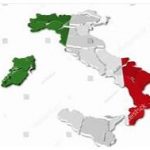Plant Life in Afghanistan
Vegetation Types: Afghanistan’s diverse topography, ranging from rugged mountains to arid plains, supports a variety of vegetation types, each adapted to specific environmental conditions. The country can be broadly divided into several vegetation zones:
- Montane Forests: Found in the higher elevations of the Hindu Kush and other mountain ranges, montane forests are characterized by coniferous trees such as spruce, fir, pine, and juniper. These forests provide habitat for diverse wildlife and serve as watersheds for rivers and streams.
- Steppe and Desert Scrub: Extending across the central and southern regions of Afghanistan, steppe and desert scrub vegetation consists of drought-resistant shrubs, grasses, and herbs adapted to arid conditions. Acacia, tamarisk, Artemisia, and various grass species dominate this vegetation type, which is vital for grazing livestock and soil stabilization.
- Riverine and Riparian Vegetation: Along riverbanks and in wetland areas, riverine and riparian vegetation thrive, including willows, poplars, reeds, and aquatic plants. These ecosystems support diverse flora and fauna, including migratory birds, fish, and amphibians, and provide valuable ecosystem services such as flood control and water purification.
- Alpine Meadows: At higher elevations above the treeline, alpine meadows dot the mountain slopes, characterized by grasses, herbs, and flowering plants adapted to cold and harsh conditions. These meadows are important grazing areas for livestock and are renowned for their rich biodiversity and stunning floral displays during the short growing season.
Flora Diversity: According to indexdotcom, Afghanistan boasts a rich diversity of plant species, with estimates ranging from 5,000 to 6,000 vascular plant species. The country’s flora reflects its varied climate, topography, and ecological zones, encompassing both native and endemic species. Some notable plant families and genera found in Afghanistan include:
- Rosaceae: This family includes a diverse array of flowering plants such as roses, fruit trees (apples, apricots, almonds), and shrubs (hawthorns, spireas), many of which are economically important for agriculture and horticulture in Afghanistan.
- Fabaceae: The legume family is well represented in Afghanistan, with species like Astragalus, Caragana, and Medicago playing key roles in nitrogen fixation, soil improvement, and forage production. Many legumes are also used for traditional medicine and as food sources.
- Poaceae: Grasses are ubiquitous in Afghanistan’s landscapes, contributing to the country’s pastoral economy and ecosystem stability. Native grass species like Festuca, Stipa, and Agropyron provide fodder for livestock and help prevent soil erosion in fragile environments.
- Asteraceae: The aster family is one of the largest plant families in Afghanistan, encompassing diverse genera such as Artemisia, Achillea, and Tanacetum. Many asteraceae species are valued for their medicinal properties, aromatic oils, and ornamental qualities.
- Lamiaceae: The mint family is represented by genera like Nepeta, Salvia, and Mentha, which are known for their aromatic leaves, medicinal properties, and culinary uses. Lamiaceae species are important components of Afghanistan’s herbal medicine tradition and are also cultivated for essential oils.
- Saxifragaceae: This family includes herbaceous and woody plants like Saxifraga and Bergenia, which are adapted to rocky habitats and alpine environments. Saxifragaceae species contribute to biodiversity in Afghanistan’s montane regions and are valued for their ornamental appeal.
Ecological Significance: Plant life in Afghanistan plays a critical role in maintaining ecosystem functions, supporting biodiversity, and providing valuable ecosystem services to human populations. Some key ecological functions and benefits of Afghanistan’s flora include:
- Soil Conservation: Plant roots help bind soil particles, reducing erosion and landslide risks in mountainous and arid areas. Vegetation cover also improves soil fertility, water retention, and nutrient cycling, supporting sustainable agriculture and land use practices.
- Water Regulation: Vegetation plays a crucial role in regulating water flow, infiltration, and runoff, thereby reducing the impacts of floods, droughts, and sedimentation in river systems. Riparian vegetation filters pollutants, stabilizes riverbanks, and provides habitat for aquatic species.
- Carbon Sequestration: Forests, grasslands, and wetlands act as carbon sinks, sequestering atmospheric carbon dioxide and mitigating climate change. Afghanistan’s montane forests and alpine meadows store significant carbon reserves and contribute to global carbon cycling.
- Biodiversity Conservation: Afghanistan’s diverse flora provides habitat and food for a wide range of wildlife species, including mammals, birds, reptiles, and insects. Endemic plant species are particularly important for preserving unique genetic resources and ecological niches.
Conservation Challenges: Despite its ecological significance, Afghanistan’s plant life faces numerous threats and conservation challenges, including:
- Habitat Loss and Degradation: Deforestation, overgrazing, agricultural expansion, and infrastructure development are major drivers of habitat loss and fragmentation in Afghanistan. Montane forests, wetlands, and riparian zones are particularly vulnerable to degradation and conversion.
- Invasive Species: Non-native invasive plants pose a threat to native flora and ecosystems in Afghanistan, outcompeting indigenous species, altering habitat conditions, and reducing biodiversity. Invasive species like Prosopis juliflora and Lantana camara have spread rapidly in certain areas, displacing native vegetation.
- Overexploitation: Unsustainable harvesting of medicinal plants, fuelwood, timber, and grazing resources contributes to the depletion of plant populations and ecosystem degradation. Traditional harvesting practices need to be managed carefully to ensure the long-term sustainability of plant resources.
- Climate Change: Climate change is altering temperature and precipitation patterns in Afghanistan, affecting plant distribution, phenology, and ecosystem dynamics. Shifts in temperature regimes, increased aridity, and changes in snowmelt timing pose challenges for plant adaptation and survival.












